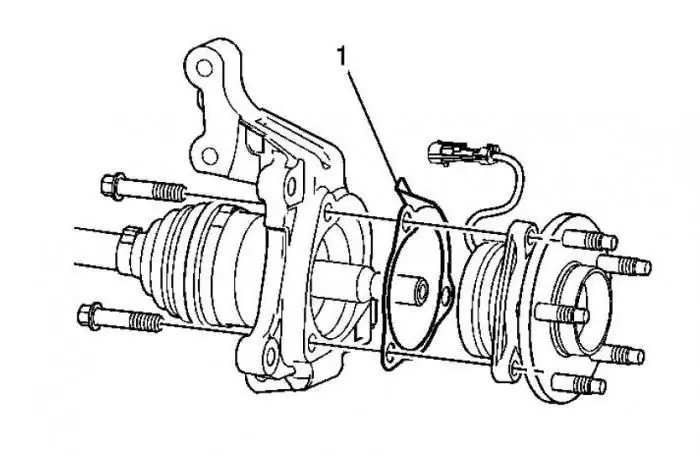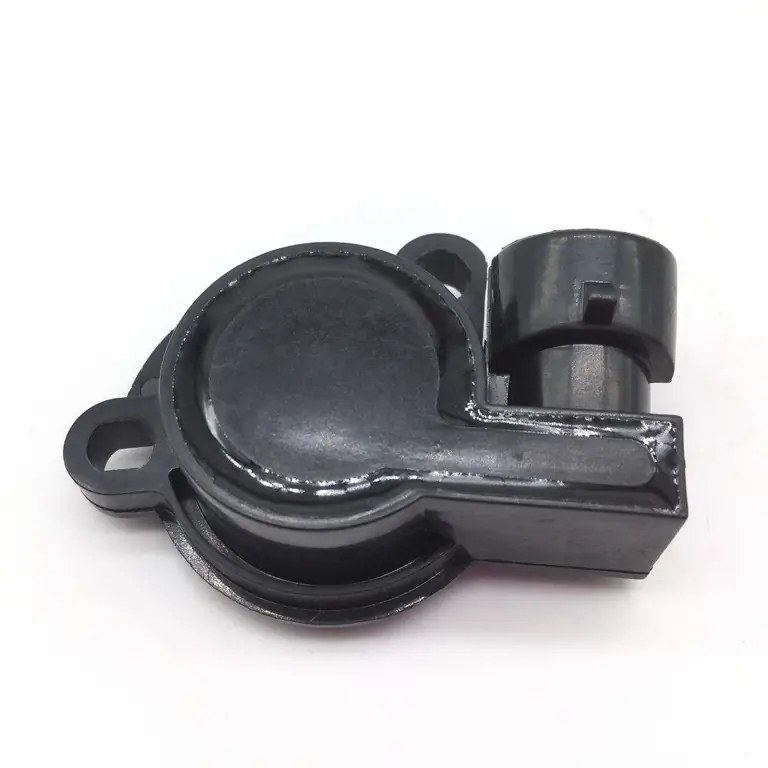2025 Author: Erin Ralphs | [email protected]. Last modified: 2025-01-22 21:14:12
The exhaust system is present on all cars without exception. It is a whole complex of parts and devices through which exhaust gases pass. If we talk about the Chevrolet Niva, this is a resonator, catalyst, oxygen sensor, exhaust manifold and muffler. In most cases, the task of each element is to reduce the noise or temperature of the exhaust gases. But today we will talk about such a detail, which also purifies gases from harmful metals. It's a catalyst. Chevrolet Niva is equipped with it from the factory, thanks to which it complies with Euro-3 and higher environmental standards.
Features
So, what is this element? This is a catalytic converter, the main task of which is to reduce the emission of harmful substances into the atmosphere. A three-component type catalyst is installed on the Chevrolet Niva. It consistsfrom:
- Cases.
- Carrier block.
- Heat insulation.

The main element of the Chevrolet Niva catalyst is the block carrier. It is made from special, refractory ceramics. This block is a set of numerous honeycombs designed to increase the area of contact with exhaust gases. Special substances-catalysts are applied to these honeycombs. These are palladium, rhodium and platinum. These metals are capable of accelerating chemical reactions in the Chevrolet Niva catalyst-resonator. Thus, harmful gas particles that pass through these components are converted into harmless oxide, nitrogen and carbon dioxide. Also note that a catalyst sensor is installed in the element housing. Chevrolet Niva is equipped with the simplest oxygen sensor - it is one for the entire element. For comparison, two such sensors are installed on modern Japanese and Korean cars.

Among the features of the catalyst, it is worth noting the fact that the element operates at a temperature of 400 degrees Celsius. Therefore, when the engine warms up, this element does not work. Only at high temperatures is it possible to remove up to 90 percent of harmful substances in the cells of the carrier unit.
Where is it?
Due to the fact that the operating temperature of the ceramic element is more than 400 degrees Celsius, the Chevrolet Niva catalyst is located immediately behind the exhaust manifold. Thus, the gases do not have time to cool yet and heat up the block carrier itself. Silencer withthe catalyst on the Chevrolet Niva is not installed as a single element. These are two different parts, one of which is placed at the beginning of the system, the second is at the very exit.
Signs
How to determine that this element is out of order? It is impossible to determine the malfunction by mileage. On average, on the Chevrolet Niva, catalysts serve about 70 thousand kilometers. But it may require replacement sooner. Therefore, you need to be guided by indirect signs:
- The first symptom is the Check Engine light on the instrument panel. It will definitely light up in the event of a malfunction of the catalytic converter. The sensor that is installed in the filter element will receive incorrect data, due to which an error will appear in the ECU.
- Power reduction. The reason for this is the difficult removal of gases through the system. Honeycombs can be melted, or simply clogged. As a result, gases cannot freely escape into the atmosphere. As a result, the car will lose power and acceleration dynamics.
- Fuel consumption. The increase in consumption is due to several factors. Firstly, the ECU will be guided by the average values of the lambda probe, which is why the mixture will be unnecessarily lean. Secondly, due to the reduction in power, the driver automatically presses the pedal harder than usual. This increases fuel consumption. As practice shows, the machine starts spending 10-15 percent more than usual.

Methods of replacement
So, what to do if a catalytic converter failure has been diagnosed? You can tryreplace the filter element with a new one. It will be right from the point of view of ecology. But in terms of budget, the replacement will entail significant costs. After all, a new catalyst on a Chevrolet Niva costs from 15 thousand rubles, and it is not a fact that it will last 70 thousand kilometers. Thus, the owners resort to different alternatives. This is:
- Removal of the Chevrolet Niva catalyst with subsequent installation of a flame arrester.
- Knocking out the ceramic filler of the old converter.
What are the features of each method, we will consider below in the article.
Replacement with flash hider
This is one of the most popular methods for dealing with a clogged catalytic converter. The essence of the process is very clear. First, the old neutralizer is removed, and a flame arrester is welded in its place. What is the latter? This is an exhaust system element that looks like a resonator.

It has a perforated pipe inside and a layer of insulation. Gases, passing through these holes, are suppressed, and their temperature decreases. As a result, we get a quieter exhaust. Naturally, no purification of gases occurs in this case. But the advantage of the design is that it allows the engine to work stably for several years. In principle, such an element cannot clog or burn out, since it does not have honeycombs and is made of stainless steel (or aluminized steel). The cost of such a flame arrester is 1300 rubles. Taking into account the installation at the service station, the price will reach 2000.
Knock out the Chevrolet Niva catalyst
For those who want to save as much as possible, this method will be ideal. What is the essence of it? First, the old catalyst is removed. Then, with the help of a grinder, its body is cut out. After that, the ceramic filling will be removed by a rough method. This is done with a hammer and chisel.

Thus, the body of the element remains empty. After that, the cover is again welded into place using a welding machine. The part is installed in a regular place. Some finalize the design - they install a perforated pipe and mount insulation (for example, glass wool or crumpled thin wire) in the layer between the pipe and the body. Thus, an analogue of a flame arrester is obtained.

The cost of such removal is less than 300 rubles, but this requires a grinder, disc, electrodes and a welding machine. Therefore, this method is not always relevant for motorists - it will be easier and faster to use the services of a service station, where a ready-made flame arrester will be installed in a couple of hours.
Tips
Whatever method is used, it is important to know that after removing the catalyst, the electronic unit will still show an error. This is accompanied by a yellow "Check Engine" light. And all because the oxygen sensor will record incorrect data on the amount of oxygen in the catalyst. How to solve this issue? To get rid of the yellow lamp once and for all, you need to use an oxygen sensor snag. This is a kind of mechanical plug that has the same thread anddimensions, like a standard lambda probe. It is the trick that is able to adjust the values of the lambda probe.

Another method is the firmware of the electronic unit. However, this operation is best done at the service station. The essence of the process is to install software for Euro-2. Thus, the ECU will not have information about the catalyst, and the engine will operate normally without additional tricks. This method is relevant if the removal of the catalyst is carried out at the service station. Indeed, in the service, the installation of a flame arrester is carried out in conjunction with the firmware of the electronic unit.
Also note that the length of the common line of the exhaust system does not change. Therefore, you should not install a new rear bumper on the Chevrolet Niva (this is restyling or dorestyling, it does not matter). The system will operate normally. The only thing that will change for the worse is the smell of gases.
Summing up
So, we found out how and why the catalytic converter is removed on the Chevrolet Niva. As you can see, this process can be carried out both independently and by the hands of professionals. The cost of this work is not too expensive. However, the result exceeds all expectations. The car becomes more frisky, fuel consumption drops to normal, and there is no need to replace the catalyst.
Recommended:
Oil in the coolant expansion tank: causes, first signs and methods for solving the problem

One of the most important systems in any car is the cooling and lubrication system. The engine is a node that is subjected to high loads. This requires high-quality cooling of parts and lubrication of rubbing pairs. In general, both systems are quite reliable, as they have a simple device. But sometimes motorists are faced with an unpredictable problem. There is oil in the expansion tank. The reasons for this phenomenon may be different. Today we will take a closer look at all of them
Chevrolet Niva front hub bearing replacement. Replacement Tips and Tricks

Did you decide to replace the front hub bearing on the Chevrolet Niva? Then this article is especially for you. Here are tips and tricks for replacing the bearing yourself
Throttle sensor VAZ-2110: signs of a malfunction, device, principle of operation, tips for troubleshooting

In this article, the purpose of the VAZ 2110 throttle position sensor, its design and principle of operation are discussed in detail and in an accessible way. Typical malfunctions, ways to detect them and fix them yourself are given
VAZ-2114, lambda probe: signs of sensor malfunction and replacement

The article describes how to restore or replace a lambda probe in a VAZ-2114 car. The design of the device, purpose, malfunctions, ways to eliminate them are described
EGR removal: software shutdown, valve removal, chip tuning firmware and consequences

While European courts are noisily and scandalously dealing with European engineers who do not make cars environmentally friendly enough, domestic car owners queue up at service stations to turn off or remove the exhaust gas recirculation system. What is the USR, why does the system fail and how is the USR removed? All these questions will be considered in detail in our today's article

